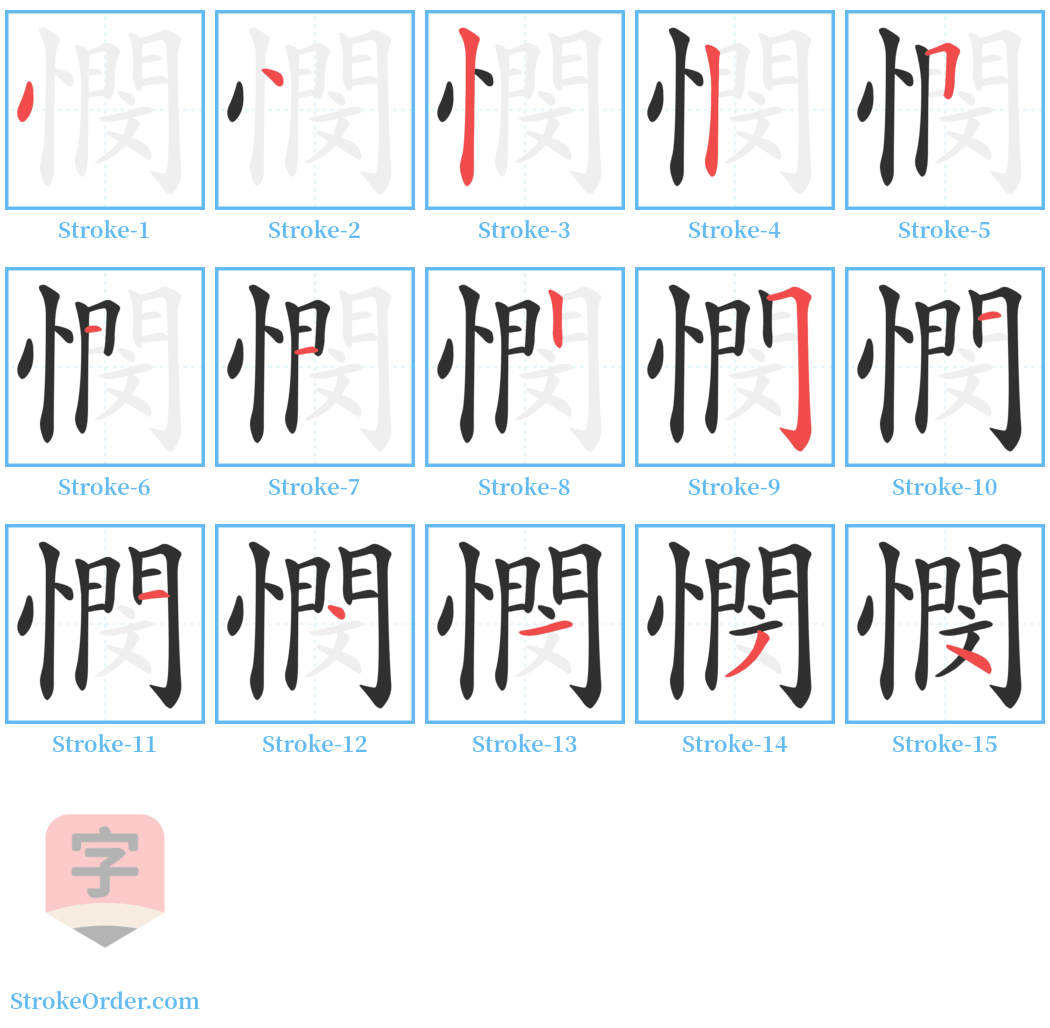憫 Stroke Order
Animated Stroke Order of 憫

Stroke Order Diagrams for 憫

Step-by-Step Handwriting Guide for 憫

Learn to Write Chinese Characters with Video Tutorials
Watch the video of writing the Chinese character "憫", learn the correct stroke order (笔顺) of the character "憫", and master the standard way of writing the character "憫".
Free Printable Handwriting Practice with Stroke Order: 憫
Printable Writing Practice Worksheet of "憫" in Portrait Orientation (Tian Zi Ge)

Printable Writing Practice Worksheet of "憫" in Landscape Orientation (Tian Zi Ge)

Information of 憫
Pinyin
mǐn
Radical
忄
Strokes
15 strokes
Usage
★★★
Definition
sympathize / to pity
憫 (mǐn)
1. **Meaning**: To commiserate; to take pity on.
- 哀憐 (āi lián): To pity and cherish.
- 恤 (xù): To relieve.
- 惻 (sè): To empathize.
2. **Meaning**: To feel worried or sorrowful.
- 憂愁 (yōu chóu): To feel anxious; troubled.
- 憂愁: Silent sorrow or worry.
3. **Part of Speech**: Verb
- (形聲。从心,閔( mǐn )聲。本義:憐恤) Same as the original meaning.
- To commiserate; to take pity on.
4. **Examples**:
- 白居易《新樂府序》: "The willows by the Sui embankment, I pity the fallen country."
- 清·黃宗羲《朱人遠墓誌銘》: "When one is far away, one feels sorrowful for the heavens and pities the people; is this merely due to one’s own misfortunes?"
5. **Further Examples**:
- 憫人之兇: To pardon and pity the wicked; describes being compassionate and understanding.
- 憫念: To show compassion.
- 憫宥: To show pity and forgive.
- 憫笑: To mock gently while also showing pity.
- 憫貧: To show compassion for the poor.
- 憫然: The appearance of pity.
6. **Part of Speech**: Adjective
- 1. **Meaning**: To feel worried; to be sorrowful.
- Example: 《孟子》: "If one is in difficulty but doesn't feel sympathetic."
- Example: 唐·白居易《琵琶行(並序)》: "After the tune ends, I feel sorrowful."
- 2. **Meaning**: Sad.
- Examples:
- 憫兇: To feel sorrowful for funeral matters, specifically for the death of one's parents.
- 憫悼: To mourn and grieve.
- 憫哀: To feel sorrow.